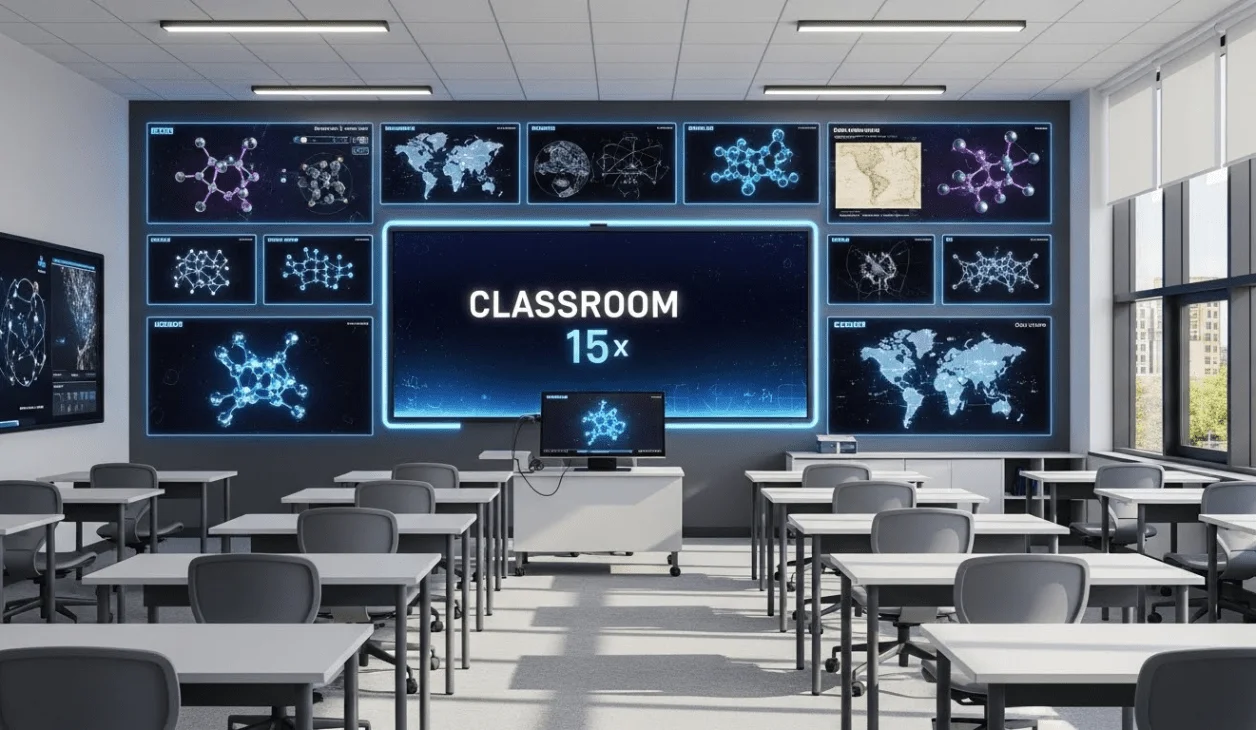Classroom 15x : Revolutionizing Modern Education
In today’s fast-paced digital era, education is no longer confined to traditional methods. Innovative solutions like classroom 15x are transforming the way students and teachers interact, making learning more efficient, engaging, and accessible. With the increasing reliance on technology in education, classroom 15x has emerged as a versatile platform designed to enhance both teaching and learning experiences.
Understanding Classroom 15x
At its core, classroom 15x is an advanced educational platform that integrates modern tools with traditional learning techniques. Unlike conventional classrooms, it emphasizes interactive learning, personalized student engagement, and seamless collaboration between teachers and students. By leveraging digital resources, classroom 15x allows educators to create immersive experiences that cater to diverse learning styles.
One of the most compelling features of classroom 15x is its adaptability. Whether you are a teacher aiming to simplify lesson planning or a student seeking a more engaging study environment, this platform provides a comprehensive solution. The integration of multimedia content, assessment tools, and collaborative features ensures that every participant benefits from a rich educational experience.
Key Features of Classroom 15x
Classroom 15x stands out in the crowded ed-tech market due to its impressive array of features:
-
Interactive Lessons: Teachers can create interactive modules, quizzes, and assignments that keep students engaged and motivated. Interactive content ensures that learning is not passive, but rather an active process.
-
Seamless Collaboration: With built-in communication tools, students and teachers can collaborate in real-time. This fosters a community-based learning environment that encourages discussions and teamwork.
-
Personalized Learning Paths: One of the standout advantages of classroom 15x is its ability to tailor learning experiences. Students receive content that matches their proficiency level, enabling them to progress at their own pace.
-
Data-Driven Insights: Educators can track performance metrics, identify knowledge gaps, and adjust lesson plans accordingly. This analytical approach ensures that no student is left behind.
-
Accessibility Across Devices: Whether on a tablet, laptop, or smartphone, classroom 15x is accessible anywhere, anytime. This flexibility is essential for modern learners who value convenience and mobility.
Benefits for Educators
Teachers play a crucial role in shaping the future of students, and classroom 15x equips them with the necessary tools to excel. First, it reduces administrative burdens by automating grading, attendance, and reporting. This allows teachers to focus more on teaching rather than paperwork.
Additionally, the platform promotes creativity in lesson planning. With a library of pre-designed templates and customizable content, educators can craft lessons that resonate with students. The ability to integrate multimedia content, such as videos, animations, and interactive exercises, ensures that lessons are not only informative but also engaging.
Another significant benefit is the enhanced communication it provides. Teachers can give real-time feedback, address student queries promptly, and maintain a transparent learning process. This level of interaction strengthens the teacher-student relationship, ultimately improving learning outcomes.
Benefits for Students
For students, classroom 15x offers an immersive and flexible learning environment. The platform encourages active participation through interactive assignments and collaborative projects. Students can learn at their own pace, revisit challenging topics, and track their progress efficiently.
Moreover, the accessibility of classroom 15x means that students are no longer restricted to classroom hours. Learning can continue beyond the school walls, empowering students to take charge of their education. The personalized approach also ensures that learners receive targeted support, enhancing their confidence and academic performance.
Why Classroom 15x is a Game-Changer
The traditional classroom setup often struggles to meet the demands of today’s learners. In contrast, classroom 15x bridges the gap between conventional education and digital innovation. By combining interactive tools, data-driven insights, and flexible learning options, it creates a holistic educational experience.
Moreover, classroom 15x supports collaborative learning, which is critical in developing soft skills like communication, teamwork, and problem-solving. These skills are increasingly important in the modern workplace, making the platform not just an educational tool, but a career-preparing resource.
Transitioning to classroom 15x also encourages adaptability and resilience. Students and teachers alike become comfortable navigating digital platforms, a skill that extends beyond academics. As schools increasingly adopt hybrid or fully online models, the familiarity with such tools ensures smoother transitions and continued academic success.
Implementation Strategies
To maximize the benefits of classroom 15x, schools and educators should follow a structured implementation approach:
-
Training and Onboarding: Provide teachers and students with comprehensive training sessions to ensure they understand all platform features.
-
Curriculum Integration: Align classroom 15x tools with existing curriculum standards to maintain academic rigor while enhancing engagement.
-
Feedback Loops: Regularly gather feedback from both students and educators to identify areas for improvement and optimize the learning experience.
-
Continuous Monitoring: Use analytics to track engagement, performance, and progress, ensuring the platform delivers tangible educational outcomes.
Conclusion
In conclusion, Virtual classroom system represents a paradigm shift in modern education. By merging technology with effective teaching strategies, it creates an interactive, personalized, and efficient learning environment. For educators, it reduces administrative workload and enhances instructional creativity. For students, it fosters engagement, independence, and continuous growth.
As education continues to evolve, platforms like Virtual classroom system will become essential tools in classrooms worldwide. Schools that embrace such innovations will not only improve learning outcomes but also prepare students for the challenges of a technology-driven future.
By integrating Virtual classroom system into educational institutions, we are taking a decisive step toward smarter, more adaptive, and inclusive learning. This platform is more than just a digital tool—it is a bridge to the future of education, ensuring that both teachers and students thrive in an increasingly digital world.






